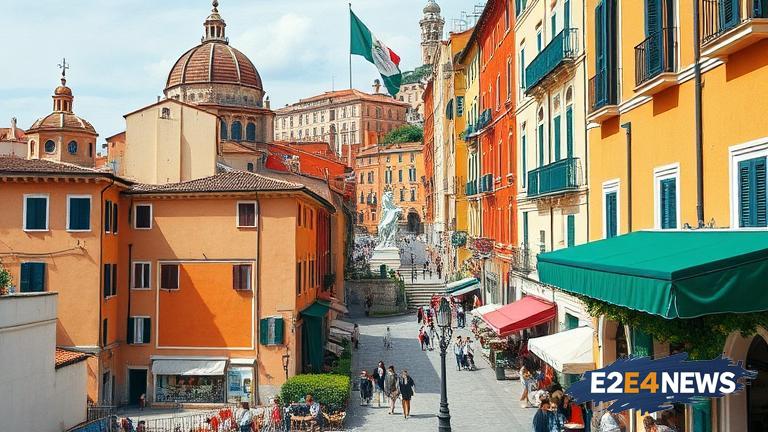Italy, known for its rich history, art, and architecture, has been facing the challenges of mass tourism. In recent years, the country has seen a significant surge in visitor numbers, which has led to concerns about the impact on local communities, the environment, and historical sites. To address these issues, the Italian government has introduced a series of bans and regulations aimed at preserving the country’s cultural heritage and promoting sustainable tourism. One of the key measures is the restriction on tourist access to certain areas, such as the historic city centers, during peak hours. This move is intended to reduce congestion and allow locals to move freely. Additionally, the government has implemented a ban on eating and drinking in public areas, such as streets, piazzas, and monuments, to prevent littering and maintain cleanliness. Tourists are also prohibited from sitting on monument steps or leaning against ancient structures, which can cause damage and erosion. Furthermore, the use of drones and selfie sticks is restricted in certain areas to prevent disruption and ensure public safety. The Italian authorities have also introduced a new law that requires tourists to respect local customs and traditions, particularly in areas with significant cultural or historical importance. This includes dressing modestly when visiting churches or other places of worship. The government has also launched a campaign to promote responsible tourism, encouraging visitors to respect the environment, conserve water, and reduce waste. Moreover, Italy has introduced a tourist tax, which will be used to fund conservation projects and support local communities. The tax will vary depending on the location and time of visit. To enforce these regulations, the authorities have increased the presence of police and tourist guides in popular areas. Those who fail to comply with the rules may face fines or even prosecution. The Italian government believes that these measures will help to preserve the country’s unique cultural identity and protect its natural beauty for future generations. The new regulations have been welcomed by local residents, who have long been concerned about the impact of tourism on their daily lives. However, some tourists have expressed disappointment and frustration with the restrictions, feeling that they are being unfairly targeted. Despite this, the Italian government remains committed to its vision of sustainable tourism, which prioritizes the needs of local communities and the environment. As the tourist season approaches, visitors to Italy can expect to see a significant increase in enforcement of these regulations. It is essential for tourists to be aware of the new rules and to respect the local culture and environment. By doing so, they can help to preserve the beauty and charm of Italy for years to come. The Italian government’s efforts to regulate tourism are part of a broader trend across Europe, as countries seek to balance the economic benefits of tourism with the need to protect their cultural and natural heritage. As the tourism industry continues to grow, it is likely that we will see more countries introducing similar regulations to manage the impact of visitor numbers. In conclusion, Italy’s crackdown on tourist behavior is a necessary step towards preserving the country’s unique cultural identity and protecting its natural beauty. While the new regulations may require some adjustments from tourists, they are essential for ensuring the long-term sustainability of Italy’s tourism industry.
